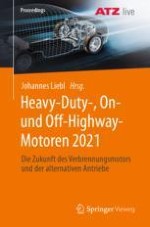2022 | OriginalPaper | Buchkapitel
Meeting Future NOx Emissions Limits with Improved Total Fuel Efficiency
verfasst von : Thomas M. Harris, James McCharthy, Chris Sharp, Bryan Zavala, Andrew Matheaus
Erschienen in: Heavy-Duty-, On- und Off-Highway-Motoren 2021
Verlag: Springer Fachmedien Wiesbaden
Aktivieren Sie unsere intelligente Suche, um passende Fachinhalte oder Patente zu finden.
Wählen Sie Textabschnitte aus um mit Künstlicher Intelligenz passenden Patente zu finden. powered by
Markieren Sie Textabschnitte, um KI-gestützt weitere passende Inhalte zu finden. powered by
